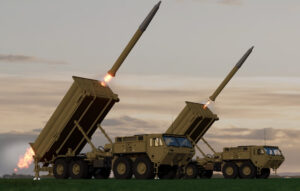Golden Dome, the Trump administration’s proposed initiative to develop a multi-layered missile defense system for countering homeland attack threats, is the hot topic in Department of Defense (DoD) circles.
This updated take on the 1980s Strategic Defense Initiative (SDI) intends to leverage mature and maturing technologies, including artificial intelligence (AI), machine learning (ML) and more, that have evolved dramatically over the last four decades. U.S. Space Force (USSF) Gen. Mike Guetlein, direct reporting program manager, was tasked with developing the portfolio of Golden Dome capabilities, including defining an “objective architecture” blueprint within just 60 days of his mid-July confirmation.
Golden Dome will break new ground in integrating commercial satellite communication (COMSATCOM) capabilities into a key DoD initiative. Especially with new low Earth orbit (LEO) satellites evolving so rapidly, the system’s architecture will need to factor in not just existing on-orbit capabilities, but also the significantly evolved technology that will be available when the program reaches initial operation and years thereafter.
Three critical elements must be considered to ensure the architecture is both viable for the short term and flexible for the long term: user terminals, whether space-based or terrestrial-based; contracting mechanisms that meet the need for speed and low cost; and a digital modeling strategy that allows DoD to evaluate the Golden Dome architecture, enables expedited integration and testing and supports on-boarding new capabilities as they advance.
Critical element: terminals
Terminals for users to receive data and signals from space are an essential part of all satellite communications (SATCOM) systems. But unlike home satellite service where consumers can readily change providers, COMSATCOM terminals deployed by the government will remain for years or even decades before being swapped out.
Consequently, Golden Dome’s architecture should allow for terminals that can accommodate multiple modem cards and wave forms to enable the integration of different satellite platforms and avoid long-term commitment to any single vendor. Adopting a common set of standards will allow backward and forward compatibility, empowering users to select new terminal devices that best meet their mission needs – or to continue using legacy equipment and mission applications.
Critical element: contracting
Legacy DoD practices rely primarily on operations and maintenance (O&M) funding to buy services that are essentially strategic infrastructure. This precludes the DoD from applying procurement funds to secure the long-term, high-assurance capacity and advanced COMSATCOM capabilities Golden Dome will require.
The terrestrial telecom model of Indefeasible Rights of Use (IRU) potentially solves this issue by allowing an entity to “own” a pool of fiber capacity without owning the fiber circuit itself. In fact, the Defense Information Systems Agency uses this model to acquire dark fiber capacity for U.S. bases.
This same approach could be applied to securing long-term COMSATCOM capacity without having to own a tangible asset, such as a transponder or satellites. The model, which requires congressional approval, would let the DoD own a dedicated pool of global LEO capacity-sized and geographically positioned for evolving operational needs. It also supports the 2026 National Defense Authorization Act (NDAA) directive for the Pentagon to adopt “private sector payment models” for COMSATCOM services.
This infrastructure-as-a-service would empower the DoD to maintain complete control over how and where capacity is deployed, ensuring reliable, scalable and secure solutions that are aligned with the DoD’s operational and strategic planning cycles. Compliance with the Metro Ethernet Forum (MEF) 3.0 standard widely used by terrestrial telecom providers and support for Layer 2 Data Link in ground infrastructure will ensure smooth COMSATCOM integration into the DoD’s terrestrial fiber networks.
Critical element: digital modeling
To meet the stated intent of operationalizing Golden Dome during the current administration, DoD will need to “exploit what they have and buy what they can.” It will be far more efficient and cost effective to digitally (rather than physically) model the concept of operations architecture, then anchor the model through high-frequency testing and verification of its efficacy, especially in different potential threat scenarios.
The modeling must focus on future needs, factoring not only what is available today, but what additional capabilities will be available within a few years. The digital approach will allow for testing more options, such as support for the space data network “backbone” layer of the system’s communication network, to determine what capabilities work best and promote resiliency and security. Ensuring interoperability will also preclude the DoD from being constrained by the limitations of any single vendor.
Golden Dome has a mandate to “go fast and think big.” The decisions that are being made during this initial period will shape its long-term direction and guide the significant government investment that is to come.
With the rapid evolution both of COMSATCOM capabilities and adversarial methods the architecture of this massive undertaking must be flexible to incorporate new commercial systems and allow the interoperability of the multiple defense layers Golden Dome needs to keep the homeland safe.







